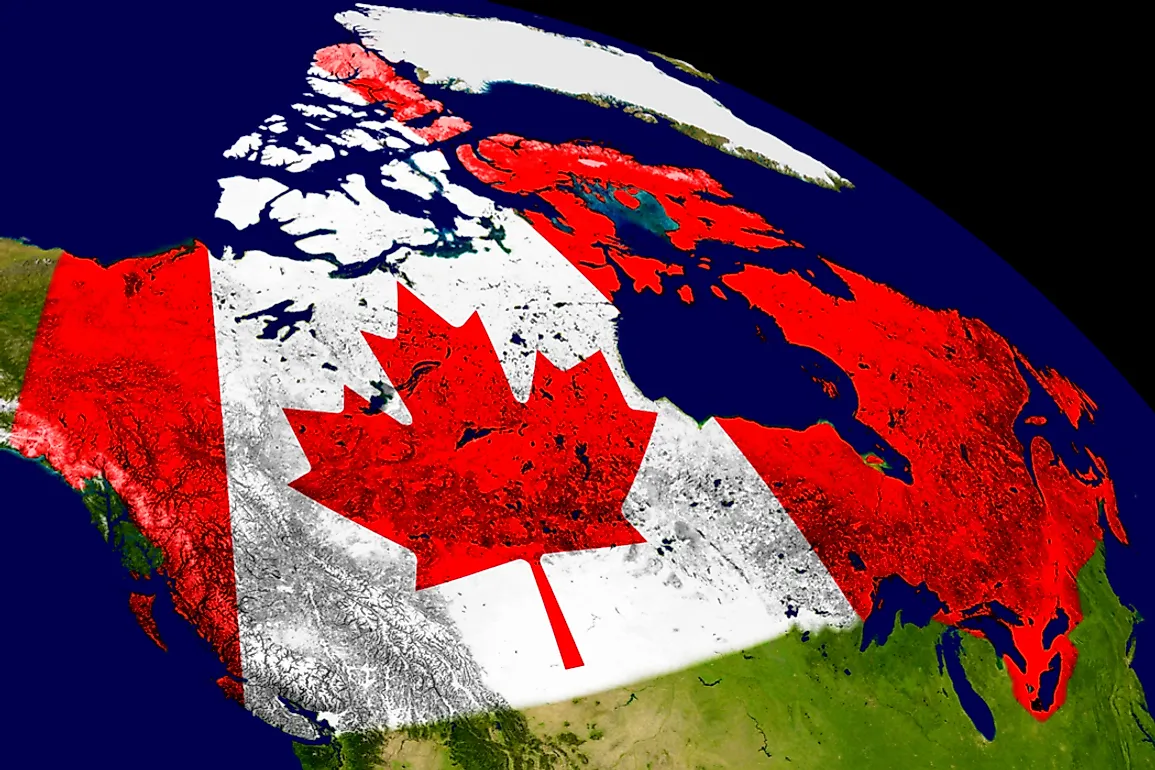Which Continent Is Canada In?

The country of Canada is found in the northern region of the continent of North America. It comprises of three territories and ten provinces which stretch northward to the Arctic Ocean, west to the Pacific Ocean, and east the Atlantic Ocean.
Geography of Canada
Canada covers about 3.85 million miles squared, which makes it the fourth-largest country by land area and the second-largest country by total area in the world. The country’s southern border with the US is the longest bi-national border in the world. A large portion of Canada experiences either severely cold or cold winter climate, while the southern regions experience warm summers. The country is sparsely populated since a large portion of its land is dominated by the Rocky Mountains, tundra, and forest. Canada is highly urbanized since about 82% of its population of 35.15 million is concentrated in medium-sized and large cities, most of which are found close to the southern border. The country’s capital city is Ottawa which is among the five largest metropolitan area, the others being Vancouver, Toronto, Calgary, and Montreal.
Canadian History
Before the European colonization, Indigenous people inhabited the region for thousands of years. Both the French and the British established colonies in the region during the 16th century. France established the colony of Canada in 1535. However, as a result of several armed conflicts, the territory was gained and lost by British North America, which ruled over most of present-day Canada. The Nova Scotia, Canada, and New Brunswick colonies were federated on July 1st, 1867 to form Canada, the semi-autonomous federal Dominion. This resulted in the accretion of both territories and provinces to the region responsible for forming present-day Canada. The country achieved its independence slowly, starting with the creation of a responsible government during the 1830s to the patriation of the Constitution in the year 1982. The country attained almost full independence from the UK in 1931 except amending its constitution.
Government Structure of Canada
The government of Canada features a constitutional monarchy and federal parliamentary democracy. The country’s head of state is Queen Elizabeth II. At the federal level, Canada is officially bilingual, with English and French being the two main languages. Being the product of massive-scale immigration, Canada is one of the most culturally and ethnically diverse countries in the world. The country also features an advanced economy that is the world’s tenth-largest since it mainly relies on well-established international trade networks and plenty of natural resources.The long and complicated relationship between Canada and the US has had a significant impact on the country’s culture and economy.
Other Distinguishing Features
The country’s culture is profoundly influenced by its wide range of policies that are protected by the constitution, thus help promote a fair or just society as well as constituent nationalities. Canada places a strong emphasis on inclusiveness and equality for all its citizens. The country’s national symbols are heavily influenced by historical naturals and native sources. For instance, the maple leaf is seen on the previous and current flags of Canada date back to the early eighteenth century. Literature in Canada is mostly divided into English and French languages since both are rooted in the literary traditions of both Britain and France. Figures such as Tom Thomson dominate the Canadian visual art, and he is the most famous Canadian painter. The country’s official national sports include lacrosse and ice hockey. However, it also shares some significant sports leagues with the US.
Tourism
Canada received more than 16 million tourists in 2012. Tourism is a large part of the Canadian economy, bringing in US$17.4 billion that same year. Domestic and international tourism to Canada's top cities include Toronto, Montreal, Vancouver, and Ottawa. The Canadian Rockies and Niagara Falls are both popular tourist destinations, as well as Canada's many national parks and historic sites.











